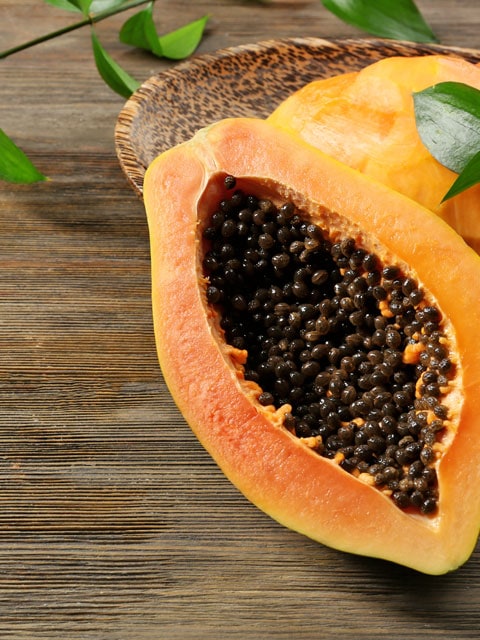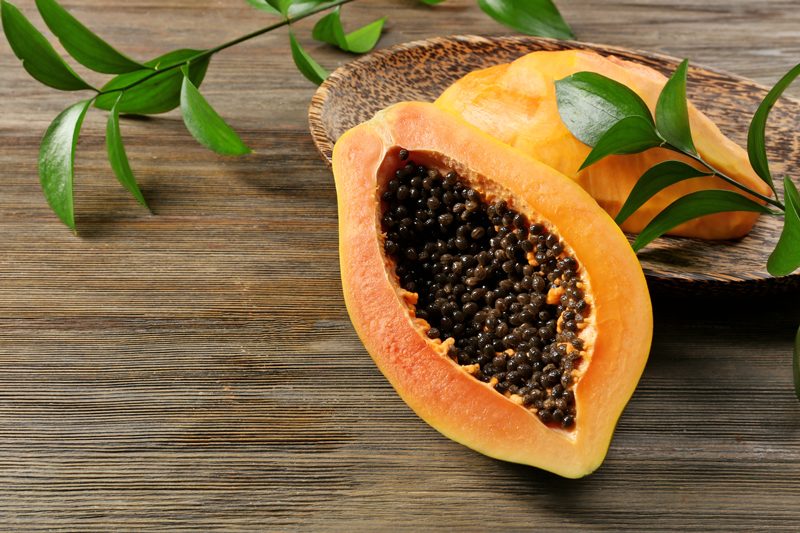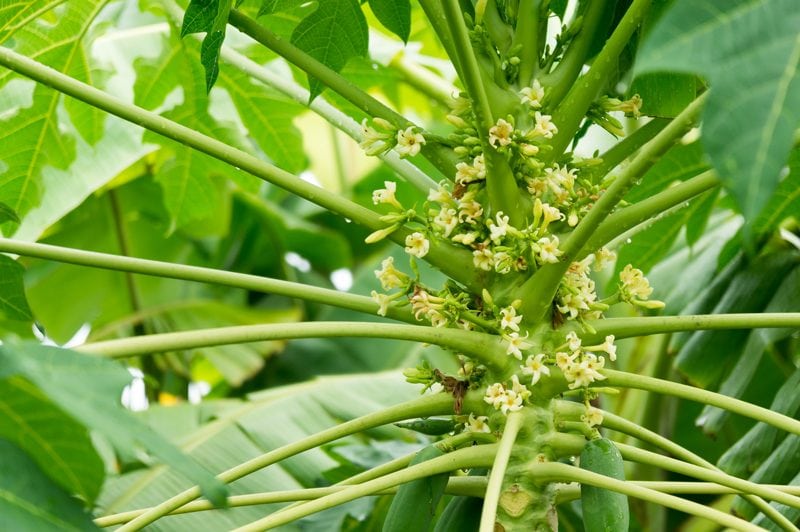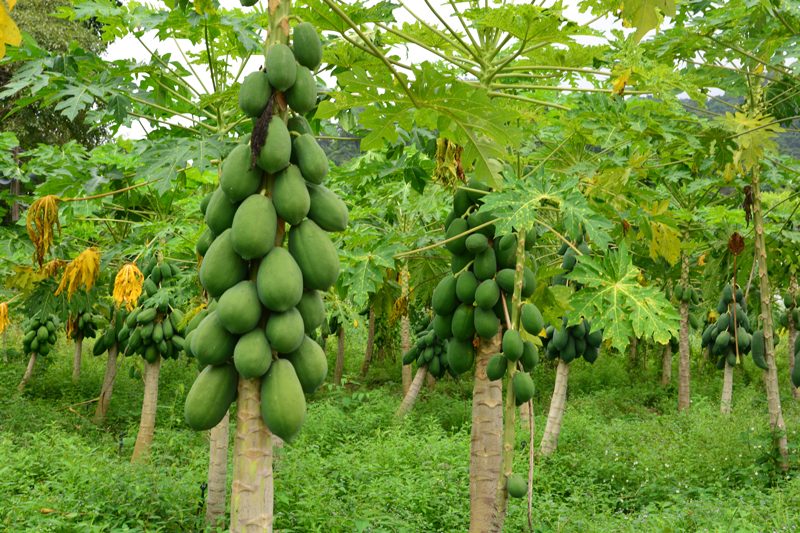


 Add to favorites
Add to favorites
It took years for me to warm up to papaya. My first introduction to it was when I was sixteen years old and working in the health food department at our local grocery store. It was dried and so loaded with sugar that it just tasted like a piece of gummy, sweet soap. It’s unfortunate that that was my first experience because the impression of it left me going over a decade before I was willing to try it again.
The fruit’s taste is vaguely similar to pineapple and peach, although much milder without the tartness, as well as creamier and more fragrant, with a texture of slightly over-ripened cantaloupe. Now there’s a description for you.

Papaya is native to Central America and exists in tropical and subtropical areas throughout the world. This large, short-lived perennial plant with a single trunk can reach up to thirty feet at maturity. Get this… the leaves are over three feet in width.
There are three different tree types; female plants, male plants, and bisexual plants. The female and bisexual plants are the only ones that produce fruit. Depending on the tree type, this fruit is small to medium round or medium to large oblong shape. Fruit flesh is generally yellow, although some red and orange types exist as well. Depending on the growing conditions, a tree may produce 30 to 150 fruits each year.
All parts of the tree contain latex. The hollow green or deep purple trunk is straight and cylindrical with prominent leaf scars. The flowers are similar in shape to the flowers of the Plumeria but are much smaller and wax-like. They appear on the axils of the leaves, maturing into the fruit. Papaya trees bloom all year long. After the first year, there should be a constant supply of both fruits and flowers on the tree.

There are two main types of papayas, Hawaiian and Mexican. The Hawaiian varieties are the papayas commonly found in supermarkets. These pear-shaped fruits generally weigh about one pound and have yellow skin when ripe. The flesh is bright orange or pinkish, depending on variety, with small black seeds clustered in the center.
These are much larger than the Hawaiian ones and may weigh up to ten pounds and can be more than fifteen inches long. The flesh may be yellow, orange, or pink. The flavor is less intense than that of the Hawaiian papaya but is still delicious and extremely enjoyable.
A properly ripened papaya is juicy, sweetish, and somewhat like a cantaloupe in flavor, although musky in some types. The fruit (and leaves) contain papain which helps digestion and is used to tenderize meat. The edible seeds have a spicy flavor somewhat reminiscent of black pepper.

Papayas are ready to harvest when most of the skin is yellow-green. The papaya fruit is left on the plant to continue mellowing its flavor for as long as they can. As the color develops, the fruit’s sugar content rises, improving the flavor. When ready, they twist the papaya fruit to break it from the stem.
After several days of ripening at room temperature, they will be almost fully yellow and slightly soft to the touch. Squeeze the papaya, if it yields to finger pressure on the rounded end it is ready. The more it gives, the riper the fruit. Don’t wait until the end becomes soft and mushy. Refrigerate the fully ripe papaya for four to seven days. I once approached a gentleman who worked in the produce section of the grocery store. I asked him to help me select a ripe papaya. As we rummaged through a pile of them, he said, “If you want to eat it today, look for one that looks like it should go in the trash… that is when it is truly ripe.” He was right and I have used this method each time I buy one.
They are often sliced and eaten by themselves or served with a myriad of other foods. They can also be cooked to make chutney or various desserts. Green papayas should not be eaten raw because of the latex they contain, although they are frequently boiled and eaten as a vegetable. In the West Indies, young leaves are cooked and eaten like spinach. In India, seeds are sometimes used as an adulterant in whole black pepper.
Just about everything on the papaya plant is EDIBLE. The fruit, leaves, flowers, stems, roots, and seeds. Caution should be taken when harvesting, as papaya is known to release a latex fluid when not quite ripe, which can cause irritation and provoke an allergic reaction in some people.
Papaya Flesh
Papaya Seeds
Tree Trunks
Papaya Bark
Papaya Leaves
Papaya Latex
Papaya Flowers
Papaya Roots
In the Raw Recipe Application
Just this year some papayas I have bought have a bitter mint taste. I do not remember it being like this before.